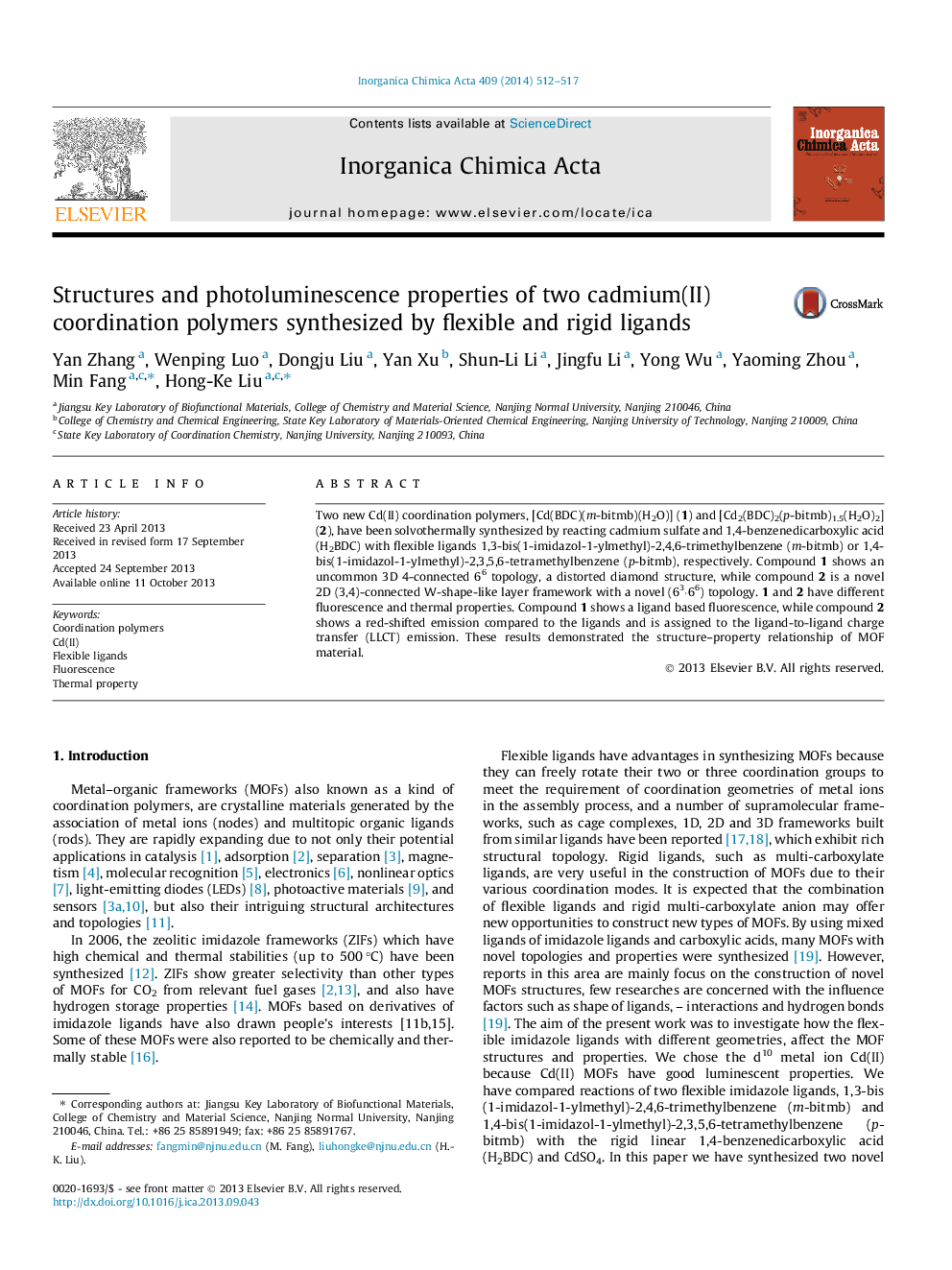| Article ID | Journal | Published Year | Pages | File Type |
|---|---|---|---|---|
| 1305815 | Inorganica Chimica Acta | 2014 | 6 Pages |
•An uncommon 3D structure and a W-shape-like 2D layer structure have been reported.•Using both flexible and rigid ligands is a strategy for construction of these novel structures.•Changing the positions of imidazole group results in different structures.•The optical properties are related to the local linker environment.
Two new Cd(II) coordination polymers, [Cd(BDC)(m-bitmb)(H2O)] (1) and [Cd2(BDC)2(p-bitmb)1.5(H2O)2] (2), have been solvothermally synthesized by reacting cadmium sulfate and 1,4-benzenedicarboxylic acid (H2BDC) with flexible ligands 1,3-bis(1-imidazol-1-ylmethyl)-2,4,6-trimethylbenzene (m-bitmb) or 1,4-bis(1-imidazol-1-ylmethyl)-2,3,5,6-tetramethylbenzene (p-bitmb), respectively. Compound 1 shows an uncommon 3D 4-connected 66 topology, a distorted diamond structure, while compound 2 is a novel 2D (3,4)-connected W-shape-like layer framework with a novel (63·66) topology. 1 and 2 have different fluorescence and thermal properties. Compound 1 shows a ligand based fluorescence, while compound 2 shows a red-shifted emission compared to the ligands and is assigned to the ligand-to-ligand charge transfer (LLCT) emission. These results demonstrated the structure–property relationship of MOF material.
Graphical abstractChanging the positions of imidazole group of the flexible ligands resulted in different structures and different luminescent behaviors.Figure optionsDownload full-size imageDownload as PowerPoint slide
